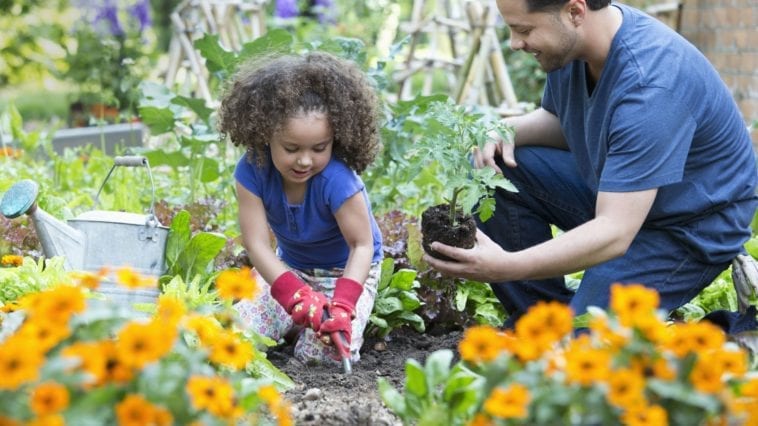Going zero waste is not just for working adults and parents. It’s for the whole family. And it’s even more essential for kids to learn and practice this lifestyle.
I believe the children are our future, so the famous Whitney Houston song goes. And indeed it is their future that we are fighting for. If the world continues its wastefulness and throwaway culture, it is future generations who would not be able to enjoy the healthy, diverse world they need to thrive. So it makes sense that kids be involved in living sustainably.
In the news worldwide, kids are trending because they protest and clamor for accountability of governments, institutions, and multinational companies about their part in the ongoing climate crisis. Kids now have Greta Thunberg and other child environmental activists as role models. But of course, parents still need to do the extra push to guide them to the sustainable path.
To help you guide kids to go zero waste, I asked several lifestyle bloggers, mommy bloggers, parents, and environmental experts on how to teach children how to be more sustainable. Get inspired by their expert insights and go zero waste as a family.
Kids and their Environmental Impacts
Children are little human beings, so it’s natural for them to also contribute to the climate crisis. Especially in a worldview of convenience and instant gratification, raising kids can lead to a lot of waste and harmful environmental impacts. But all the more, you need to teach kids to go zero waste so that they will develop awareness and a nature-driven lifestyle.
Here are some of the environmental impacts you can expect with having children:
Waste from single-use kids’ items
According to Sarah Spencer, Founder, and Director of Eco Passion, depending on the age of your children, the waste impacts can be large. It is often easy to fall into the trap of buying all the products on the market designed to make your life easier, but in reality, a few small adjustments and your life won’t be any harder, but it can be less wasteful.

A couple of examples are disposable nappies and baby wipes for babies and packaged snacks to eat on the go for young children. If you can use washable nappies and damp bamboo cloths instead, you will largely reduce your contribution to the landfill. For young children, it can be tempting to buy packaged snacks like string cheese, mini yogurts, or cheese dippers. If you can substitute these for chopped veggies, cubes of cheese, or dried fruit that you bring in reusable tubs from home, then you not only reduce your waste but reduce the consumption of processed foods too.

To Melanie Musson, mom of five, a sustainability expert with Clearsurance, diapers are a big waste issue with babies and toddlers. Toys can be another item that contributes to waste. Pre-packaged food can have a negative environmental impact.
Pollution impacts kids’ health
According to Elizabeth Hicks, Co-Founder of Parenting Nerd, an environment full of pollution and toxic wastes can have adverse effects on a child’s neurotic development. Newborns who are breastfeeding can suffer greatly in an environment filled with carcinogenic compounds which include dioxins as it affects the health of their mother and makes them weak, enabling less nutrition during their feeding years.

Poor environmental conditions, rising pollution, and a lack of proper waste disposal can be extremely harmful to a child’s growth. Children can develop a variety of health problems, including respiratory diseases such as asthma, and when children with asthma are exposed to pollutants in the air, their condition worsens. Lastly, air pollution has an impact not only on
the respiratory system but also on the nervous system. Toxic substances in the atmosphere, such as lead, can harm children’s cognitive development.
Why Is Educating Children About The Environment Essential?
Elizabeth Hicks says that environmental education provides the awareness that enables children to apply their learnings into the real world and make more sense of recycling. It also helps establish a mindset of saving the environment and keeping the planet clean. We can reduce pollution if environmental education is deemed necessary.

It is critical to raise climate awareness among children to solve these problems so that the gravity of the situation does not catch them off guard. Once adequately educated and informed, children are ready to participate in the global fight for environmental preservation. They’ll start raising awareness on their own, and they’ll start contributing to the movement. Moreover, keeping children informed is a method of instilling a habit at a young age to be fully aware of the concept of environmental sustainability.
For Sang Nguyen of EQUO, this is our time to take action that builds the knowledge and skills needed to address complex environmental issues, as well as take action to keep our natural world healthy, our economies productive, and communities vibrant.
Higher levels of environmental knowledge correlate significantly with a higher degree of pro-environment and conservation behavior. The more people know, the more likely they are to recycle, be energy efficient, conserve water, etc. and children need to learn this at a young age.

To Melanie Musson, children can make a difference in the environment now. Still, as they grow and learn, they’ll soon be the ones making decisions for themselves and coming up with innovative sustainability solutions.
Sarah Spencer says, “Kids are the future! I would have loved to have had more exposure to the issues facing the environment when I was a child. Mostly because I was always interested in nature and the environment without knowing any of the damage we were already doing back in the 80s. If our children can grow up with this knowledge under their belts, then maybe we will have time to slow down our destruction of the planet.”
Children should know about zero-waste living because we need to work on saving our planet and how we as people need to care for the Earth. We should strive to live a life that does not leave a harsh imprint on the Earth. That means using reusable utensils, not wasting water, using fewer plastics, and owning less in general. Buying sustainable products is another way to help our planet and live zero-waste, says Derin Oyekan, the Co-Founder of Reel Paper.
Tips for Teaching and Guiding Kids to a Zero Waste Lifestyle
Going zero waste doesn’t happen overnight. So here are some expert tips for you to get started on guide your kids to live with less waste but even more fun!
Teach them about waste management
Elizabeth Hicks: When teaching your children waste management techniques it is critical to be rational and realistic. Moreover, to reduce the harmful effects of plastic on the environment, the first step is to practice simple day-to-day activities such as switching from plastic to paper or cloth bags. Another step is to start a conversation by making sure your children understand the severity of the situation. Other waste management techniques may include using reusable water bottles, lunch boxes, etc., so even a tiny step can contribute to a better future.
Less Paperwork and set ground rules

Elizabeth Hicks: Teachers can help in guiding kids along with parents by giving out more digital assignments and less paperwork. While parents can help their children understand the importance of cleaning by establishing ground rules of wasting fewer wrappers and using household equipment like jars for sweets like chocolates and ice cream.
Show them
Melanie Musson: With kids, you’ll be more successful teaching them if you can show them impacts. You may want to show them pictures of beaches covered in trash, or you can show them a landfill and talk about how their trash could stay there forever. Let them participate in composting waste, and show them how using reusable items keeps trash out of landfills and off beaches.
Lead by Example
Sarah Spencer: Ultimately, I believe it comes down to leading by example. My son sees the work I do with Eco Passion and takes pride in explaining to people that I am trying to save the planet. It’s embedded in him since he’s learned first-hand about why we pick up plastic on beach cleans. He’s also already a David Attenborough fan and understands how humans can negatively impact the planet. He talks about why disposable plastic is bad and why we mustn’t drop litter, and to him, recycling is simply logical.
Incorporate zero waste into your family life

Alexandra Fung: As a mom of 4 and co-founder of Upparent, she advises this. Kids will absorb lessons about zero waste living most effectively when incorporated naturally into their daily lives. One easy way to do this is to use reusable containers such as water bottles, lunch boxes, snacks, and sandwich bags, and to explain as you are packing or using them the importance of minimizing waste as much as possible.
Conclusion
Everyone from individuals to big institutions and governments has a responsibility to take care of our world. One of the best ways you can fulfill this responsibility is by going zero waste. Even kids as young as babies can go zero waste with the parents’ guidance.
Use the expert tips from this guide to jumpstart your families’ shift to a more sustainable lifestyle.




